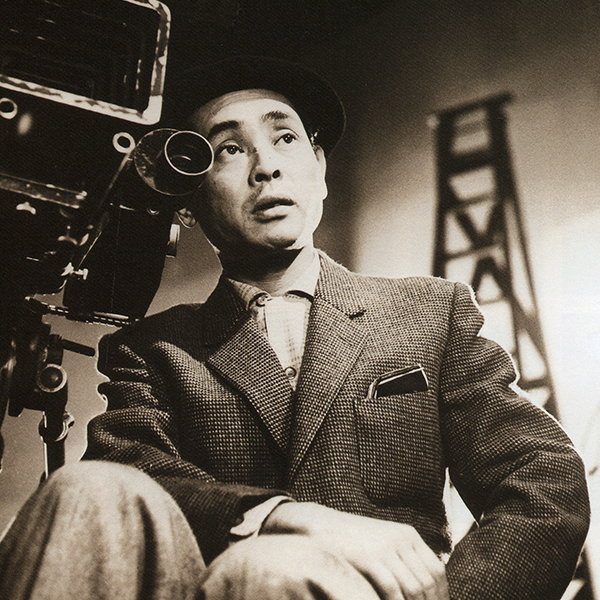Keisuke KINOSHITA
木下恵介
Keisuke KINOSHITA (1912–1998) is considered one of the most important Japanese directors. Starting in 1943, he made popular dramas, comedies, romances, ghost stories and noir films for Studio Shochiku, finding strong images even within conventions. After ARMY (1944), he was not allowed to work until the end of World War II. From 1945 on, the tension between the past and the hope for a new beginning was his central theme. The suffering, responsibility, and moral challenge of the individual are at the heart of many of his dramas. KINOSHITA’s rejection of feudal, militaristic Japan is clearly visible. With CARMEN COMES HOME (1951), he brought the first Japanese color film to the cinema, a summer comedy with serious overtones. KINOSHITA, who also repeatedly addressed the contrast between country and city, is considered the central humanist of post-war Japanese cinema. His sensitively-portrayed characters and their fates continue to touch audiences today.
Films shown at Nippon Connection
She Was Like A Wild Chrysanthemum,
Japan 1955 (Director)
NC23
Carmen Comes Home,
Japan 1951 (Director)
NC23
Spring Dreams,
Japan 1960 (Script)
NC23
She Was Like A Wild Chrysanthemum,
Japan 1955 (Script)
NC23
Carmen Comes Home,
Japan 1951 (Script)
NC23
The Snow Flurry,
Japan 1959 (Director)
NC23
Carmen’s Pure Love,
Japan 1952 (Director)
NC23
The Snow Flurry,
Japan 1959 (Script)
NC23
Carmen’s Pure Love,
Japan 1952 (Script)
NC23
The River Fuefuki,
Japan 1960 (Director)
NC23
Twenty-Four Eyes,
Japan 1954 (Director)
NC23, NC00
Army,
Japan 1944 (Director)
NC23
The River Fuefuki,
Japan 1960 (Script)
NC23
Twenty-Four Eyes,
Japan 1954 (Script)
NC23, NC00
Morning For The Osone Family,
Japan 1946 (Director)
NC23
Spring Dreams,
Japan 1960 (Director)
NC23
Ballad Of Narayama,
Japan 1958 (Director)
NC21
Ballad Of Narayama,
Japan 1958 (Script)
NC21
Love Letters,
Japan 1953 (Script)
NC21
The Yotsuya Ghost Story (Part I & II),
Japan 1949 (Director)
NC16


